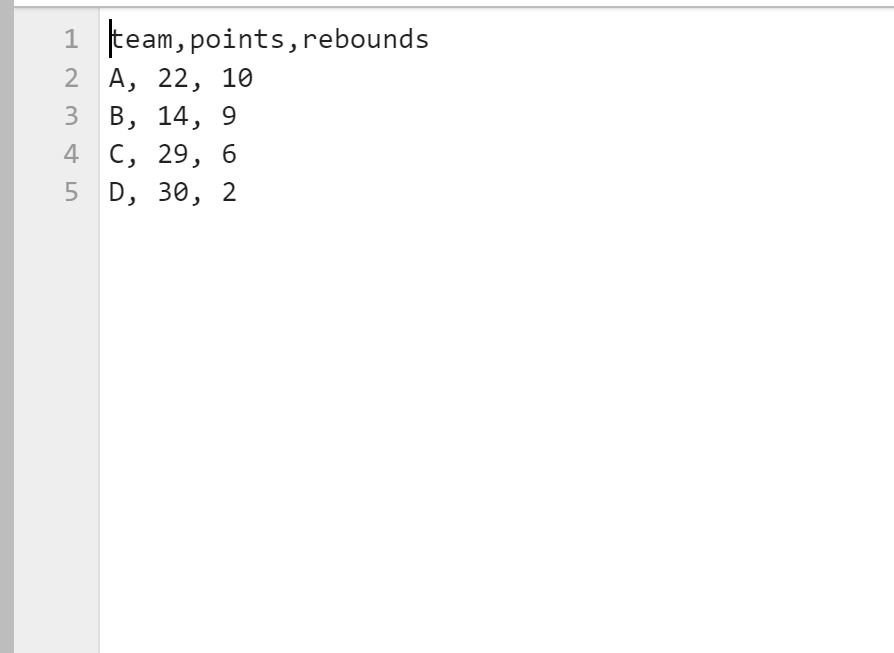You can use the following basic syntax to specify the dtype of each column in a DataFrame when importing a CSV file into pandas:
df = pd.read_csv('my_data.csv', dtype = {'col1': str, 'col2': float, 'col3': int})
The dtype argument specifies the data type that each column should have when importing the CSV file into a pandas DataFrame.
The following example shows how to use this syntax in practice.
Example: Specify dtypes when Importing CSV File into Pandas
Suppose we have the following CSV file called basketball_data.csv:
If we import the CSV file using the read_csv() function, pandas will attempt to identify the data type for each column automatically:
import pandas as pd #import CSV file df = pd.read_csv('basketball_data.csv') #view resulting DataFrame print(df) A 22 10 0 B 14 9 1 C 29 6 2 D 30 2 3 E 22 9 4 F 31 10 #view data type of each column print(df.dtypes) team object points int64 rebounds int64 dtype: object
From the output we can see that the columns in the DataFrame have the following data types:
- team: object
- points: int64
- rebounds: int64
However, we can use the dtype argument within the read_csv() function to specify the data types that each column should have:
import pandas as pd #import CSV file and specify dtype of each column df = pd.read_csv('basketball_data.csv', dtype = {'team': str, 'points': float, 'rebounds': int})) #view resulting DataFrame print(df) A 22 10 0 B 14 9 1 C 29 6 2 D 30 2 3 E 22 9 4 F 31 10 #view data type of each column print(df.dtypes) team object points float64 rebounds int32 dtype: object
From the output we can see that the columns in the DataFrame have the following data types:
- team: object
- points: float64
- rebounds: int32
These data types match the ones that we specified using the dtype argument.
Note that in this example, we specified the dtype for each column in the DataFrame.
However, you can choose to specify the dtype for only specific columns and let pandas infer the dtype for the remaining columns.
Note: You can find the complete documentation for the pandas read_csv() function here.
Additional Resources
The following tutorials explain how to perform other common tasks in pandas:
Pandas: How to Skip Rows when Reading CSV File
Pandas: How to Append Data to Existing CSV File
Pandas: How to Read CSV File Without Headers
Pandas: How to Set Column Names when Importing CSV File

